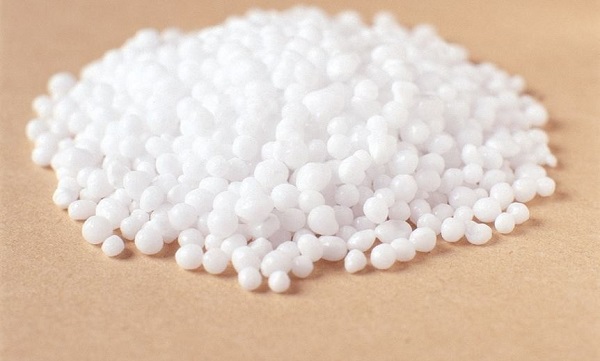A Brief Overview of Ammonium Sulfate and Urea
Ammonium Sulfate and Urea are key nitrogenous fertilizers in agriculture, helping plants flourish while increasing crop yield. Ammonium sulfate’s chemical formula (NH4)2SO4 supplies both nitrogenous elements as well as sulfur for plants like onions and garlic that require sulfur for proper growth.
Its acidifying effects make it suitable for alkaline soils while being produced from ammonia and sulfuric acid through crystallization with good solubility in water.
Urea (NH2)2CO) contains an increased nitrogen content and can be utilized by many soil types. Made by mixing ammonia with carbon dioxide under high-pressure conditions, urea forms solid water-soluble granules or prills whose main advantage is stimulating vigorous plant growth with its ample nitrogen supply.
Its secondary advantage includes contributing to rich green colors in plants. Improper management may lead to soil alkalinity as well as nitrogen loss through volatilization.
Both fertilizers are widely utilized, yet their usage often depends on soil conditions, crop types, and nutritional needs. Proper management of both types is critical in mitigating environmental impacts while simultaneously encouraging optimal plant growth.
Definition of Ammonium Sulfate
Ammonium Sulfate (NH4)2SO4 is an inorganic fertilizer commonly used to provide plant life with nitrogen and sulfur nutrients, particularly onions, garlic and brassicas, which thrive in sulfur-rich soil environments. Ammonium Sulfate increases plant growth while simultaneously enriching their flavor and aroma.
Ammonium sulfate, formed through the reaction between ammonia and sulfuric acid, appears as a crystalline solid that dissolves easily in water. One of the key attributes of sulfur is its ability to acidify soils, making it an excellent solution for alkaline conditions where lowering pH levels is desired.

Application rates depend on the specific needs of crops and soil, making it important for farmers and gardeners to adhere to recommended dosages in order to prevent issues like salt damage.
Ammonium sulfate fertilizer plays a crucial role in plant protein synthesis and enzyme activities, leading to higher yield and quality yields and yield increases. Its dual benefits of providing essential nutrients while improving soil conditions make ammonium sulfate an ideal choice for various agricultural and horticultural applications.
Definition of Urea
Urea (NH2)2CO) is an efficient source of nitrogen for plants produced synthetically using ammonia and carbon dioxide under high pressure and temperature conditions. Urea, an inert and highly water-soluble solid, is one of the world’s most widely used nitrogenous fertilizers, boasting an estimated 46% nitrogen content for optimal plant growth, leaf development, and crop yield enhancement.
After application, urea undergoes rapid conversion by soil enzymes and bacteria into ammonia and then nitrate, making its nitrogen available to plants. If not managed effectively. This transformation process could result in ammonia volatilization losses which result in potential plant losses due to ammonia volatilization.

Urea is an extremely flexible choice that is suitable for various soil types and crops. Due to potential increases in pH that could result from its use, great care must be taken when using this fertilizer.
Application methods and rates must be tailored to the unique soil and crop needs in order to maximize absorption while limiting environmental impact. Urea remains popular among farmers and gardeners around the world thanks to its high nitrogen content, affordability and accessibility three qualities which continue to make it such an appealing option.
What is the Importance of Ammonium Sulfate and Urea?
Ammonium sulfate and urea play an integral role in agriculture and horticulture due to their use as nitrogenous fertilizers.
Their significance can be emphasized in the following manner:
- Nitrogen Sources: Both provide essential sources of nitrogen, an essential nutrient that facilitates plant growth, aids protein synthesis, and plays an essential biochemical role within plants.
- Crop Yield and Quality: Nitrogen fertilization plays a significant role in improving crop yield and quality. By stimulating vigorous vegetative growth, it produces healthier crops with more abundant harvests.
Soil Health:
For Soil Health (Ammonium sulfate): Ammonium sulfate has an acidifying effect on soil, making nutrients more accessible for plant use. This may be especially helpful in alkaline environments by helping balance pH levels and making nutrients more available to plants.
Soil Health (Urea): Urea is neutral, meaning it won’t directly change soil pH; however, improper management could result in increased alkalinity due to ammonia release.
- Economic Significance: Both fertilizers are crucial components in food production around the globe, impacting economies and livelihoods in profound ways. Urea in particular stands out due to its high nitrogen content at an attractive cost – making it the go-to choice for many farmers worldwide.
- Versatility: Urea can be used in multiple soil types and crops, while ammonium sulfate is best for plants with higher sulfur needs.
- Environmental Considerations: Proper application of fertilizers can increase soil health without harming the environment; however, improper use or misapplication could lead to serious consequences such as soil degradation, water contamination and greenhouse gas emissions.
Key Difference Between Ammonium Sulfate and Urea
| Features | Ammonium Sulfate | Urea |
|---|---|---|
| Chemical Formula | (NH4)2SO4 | (NH2)2CO |
| Nutrient Content | Provides nitrogen and sulfur | High nitrogen content |
| Appearance | Crystalline solid | White granules or prills |
| Solubility in Water | Highly soluble | Highly soluble |
| Soil pH Impact | Acidifying effect | Can increase alkalinity |
| Production Process | Made from ammonia and sulfuric acid | Made from ammonia and CO2 |
| Application | Suitable for alkaline, sulfur-deficient soils | Versatile, suitable for various soils |
| Environmental Impact | Potential salt damage | Ammonia volatilization risk |
| Common Usage | Favored for sulfur-loving plants like onions, garlic | Widely used for its high nitrogen content |
Various Application Methods for Ammonium Sulfate and Urea
Ammonium Sulfate Application Methods
- Broadcasting:
- Description: Evenly spreading the ammonium sulfate particles over the surface of the soil across every field.
- The benefits of HTML0 are: Rapid application guaranteeing the same coverage.
- Problems: Potential for nutrient runoff; must be integrated into the soil to limit loss.
- Top Dressing:
- Description: Applying the fertilizer on the soil’s surface around the plants that are already established.
- Advantages The direct supply of nutrients to plants in growth, particularly useful during the critical stage of growth.
- Problems It may require water to allow nutrient infiltration through the soil.
- Incorporation into soil:
- Description: Mixing the fertilizer directly into the soil usually done prior to planting.
- Advantages Lowers the loss due to water runoff and increases the availability of nutrients to roots.
- challenges: It requires additional equipment and labor.
- Fertigation:
- description: Applying ammonium sulfate to water used for irrigation.
- The benefits: The system ensures uniform distribution as well as quick availability to all plants.
- Problems: Requires a compatible irrigation system and a careful approach to prevent over-application.
Urea Application Methods
- Broadcasting:
- Description: Spreading urea evenly over the surface of the soil.
- Advantages Easy and quick application. broad coverage.
- Problems: Risk of ammonia volatilization. It is best to follow by rain or irrigation to absorb the soil.
- Side Dressing:
- Description: Applying urea alongside rows of plants growing.
- The benefits: It targets nutrient distribution lowers losses and increases nutrient uptake.
- Problems: Timing is crucial for avoiding the destruction of plants.
- Fertigation:
- Description: Mixing urea with irrigation water to make it easier for you to apply.
- Advantages Simple application decreased labor costs, and improved the uptake of nutrients.
- Issues requires a suitable irrigation system and a careful management.
- Foliar Application:
- Description: Spraying a urea solution directly on plant leaves.
- Advantages Accelerate nutrient intake is beneficial in the quick treatment of nitrogen deficiency.
- challenges: The risk of leaf burning is high if not adequately diluted; typically used for supplementing nutrition.
Considerations
- Environment Impact Correct application practices are essential to reduce the environmental impacts such as runoff, leaching and gaseous loss.
- The type of crop and the growth stage The selection of method should be based on the specific requirements of the type of crop and its stage of growth.
- Soil Type The soil of each type has different capacities for retaining nutrients which affect the efficacy of fertilizer application.
Analyzing the Effect of Ammonium Sulfate as well as Urea on Soil pH
Ammonium sulfate and urea each have unique effects on soil pH, making their interaction essential to successful and sustainable agricultural practices.
Ammonium Sulfate:
- Acidifying Effect: Whilst ammonium sulfate dissolves into soil water, it dissociates into ammonium (NH4+) and sulfate (SO4-) ions; these ammonium ions can then be taken up by plants or converted to nitrate by soil microbes via the process known as nitrification, thus producing hydrogen ions (H+), thus acidifying the soil.
- Impact on Plants: Acidification may benefit plants that thrive in acidic conditions or help neutralize alkaline soils, but in already acidic soils additional acidification could lead to nutrient imbalances and toxicity issues.
Nutrient Availability:
- Increased Availability: With its lower pH level, reduced pH can enhance the availability of certain essential nutrients such as phosphorus, iron, zinc and manganese.
- Reduced Availability: Urea can decrease calcium and magnesium availability and lead to aluminum toxicity under highly acidic conditions, potentially leading to aluminum toxicity in high concentrations of hydrogen peroxide environments. It has transient acidifying effects.
Urea:
- Transient Acidifying Effect:
- Mechanism: Urea has an initially acidifying effect when converted to ammonium ions; however, as nitrification proceeds, its conversion into nitrate ions releases hydroxyl ions (OH-). These results in increased soil pH.
Neutral to Alkaline Shift: Over time, applying urea may shift soil from neutral to alkaline conditions.
Ammonia Volatilization:
- pH Spike: Converting urea to ammonia can produce an temporary spike in pH at the soil surface, leading to ammonia volatilization and nitrogen loss. To minimize its impacts, integrate urea into soil or use urease inhibitors as mitigation.
Nutrient Dynamics:
- Nutrient Imbalance: Increased alkalinity can create an imbalance of soil nutrients, with certain micronutrients becoming less available to plants as a result of alkaline conditions.
Environmental and Economic Impact
An understanding of the economic and environmental consequences of ammonium Sulfate and Urea is essential for sustaining agriculture methods.
Let’s look at the analysis of these two fertilizers based on the following subjects:
Environmental Impact
Ammonium Sulfate:
- Soil Acidification: Continuous use could result in soil acidification which could affect soil microbiota and also nutrient availability. In the extreme it could lead to toxic levels of aluminum within plants.
- Runoff: If it is not properly applied the sulfate could get into waters, potentially adding to the acidification of water ecosystems, or promoting unwanted algae expansion.
Urea:
- Ammonia Volatilization: A wrong application could lead to ammonia volatilizing into the atmosphere, adding to the pollution of air as well as removing important nitrogen and making it unusable for plants.
- Leaching Urea: Leaching Urea is able to convert into the nitrate found in soils. It can lead to leaching and which could lead to contamination of groundwater sources.
- Greenhouse Gas emissions: Under certain conditions, the processes of nitrification and denitrification that are associated with the application of urea can result in Nitrous oxide, which is a powerful greenhouse gas.
Economic Impact
Ammonium Sulfate:
- Cost: Generally more expensive than urea on a cost-per-unit basis.
- Crop Yield: Increases yields particularly in those crops that require sulfur. This could lead to an increase in profits from farming.
- Soil Treatment: The expense of managing soil pH could increase when consistent usage leads to substantial acidification.
Urea:
- Price: Urea often presents as a cost-effective supply of nitrogen because of its nitrogen-rich content as well as its efficiency in the manufacturing method.
- Yield Benefits: It Offers significant yield advantages when used correctly, while also increasing the return on capital investment to farmers.
- Losses: Losses in economics can happen in the event that urea has been applied incorrectly and causes loss of nitrogen by leaching or volatilization.
Broader Implications:
- Food Security: When utilized correctly, are able to significantly improve crop yields and contribute to an increase in food security.
- Trade and Market: As essential inputs to agriculture price fluctuations of these fertilizers may cause ripples in the food industry worldwide which can affect trade balances as well as the prices of commodities.
- Sustainability Initiatives: Both fertilizers must be controlled under sustainable agriculture initiatives. The best management practices will help to reduce the environmental impact while also ensuring financial sustainability for farmers.
Summary
Ammonium sulfate and urea are two popular nitrogenous fertilizers. Ammonium sulfate [(NH4)2SO4] supplies both nitrogen and sulfur and has the unique ability to acidify alkaline soils while being popular with sulfur-loving plants due to being made up of both ammonia and sulfuric acid derived through ammonia chemical processing.
It’s often preferred over its rival, urea fertilizers. Urea (NH2)2CO boasts an abundance of nitrogen and is therefore well suited to various soil types. Produced from ammonia and carbon dioxide, urea fertilizer is popularly chosen due to its nitrogen content and affordability, though proper management must be observed to avoid soil alkalinity and ammonia volatilization losses.
Both fertilizers play an integral part in improving plant growth and yield, with optimal application depending on individual plant and soil requirements for maximum environmental sustainability and maximum results.

